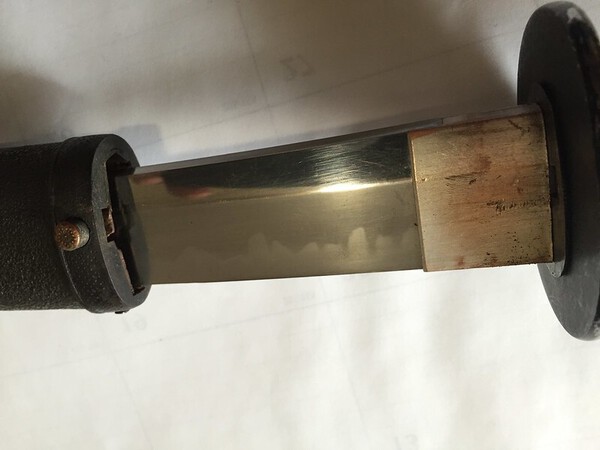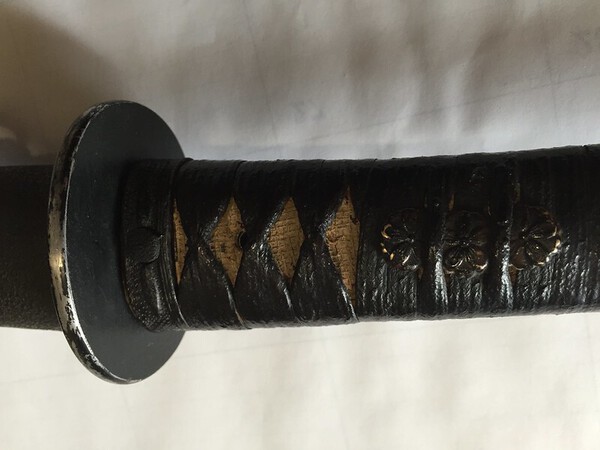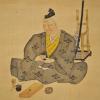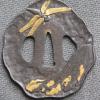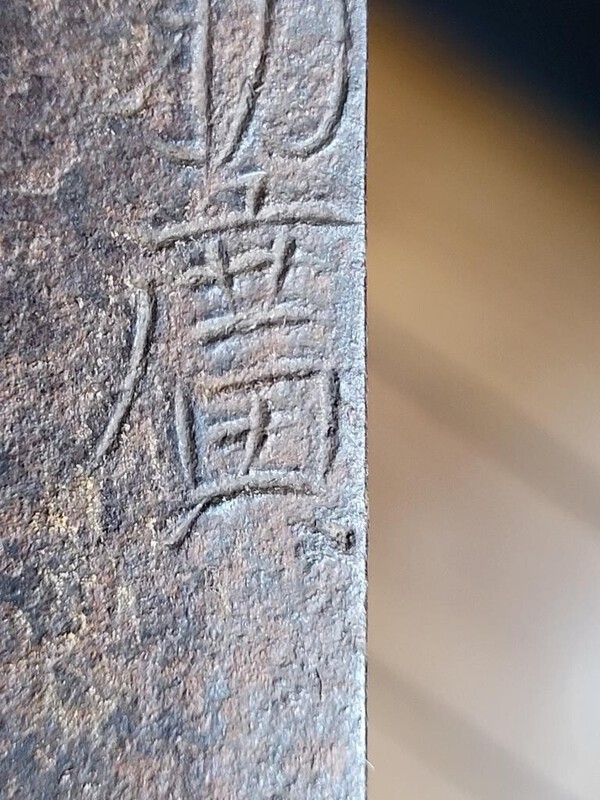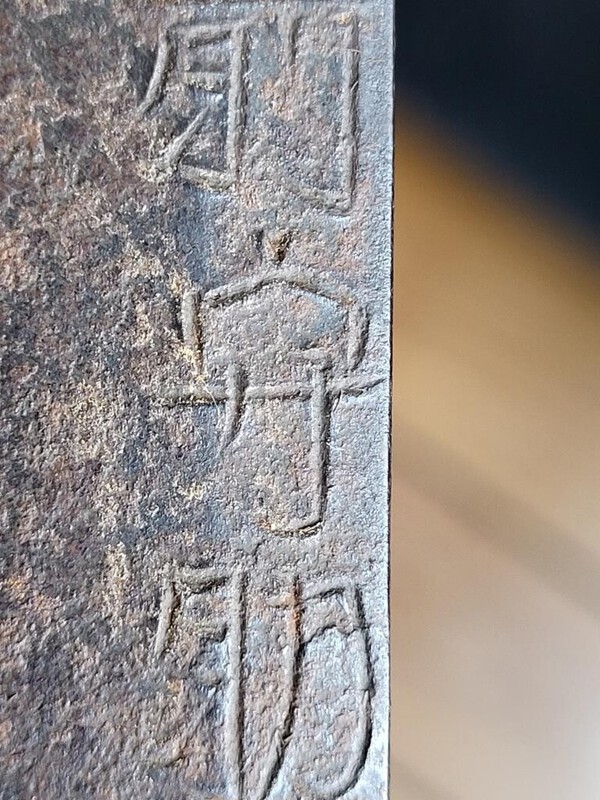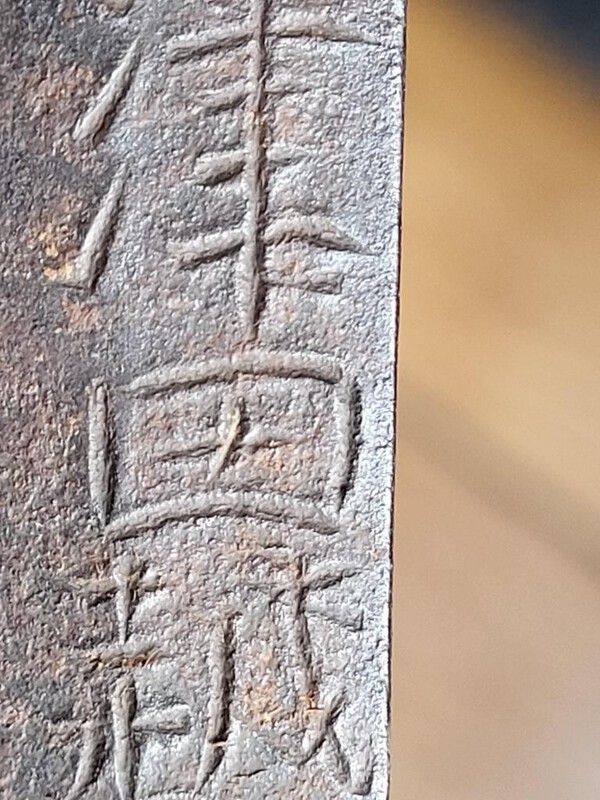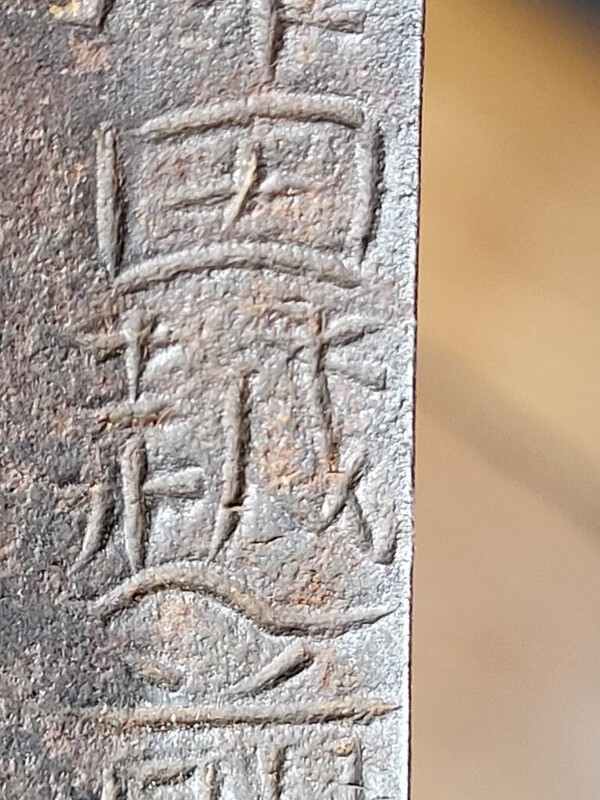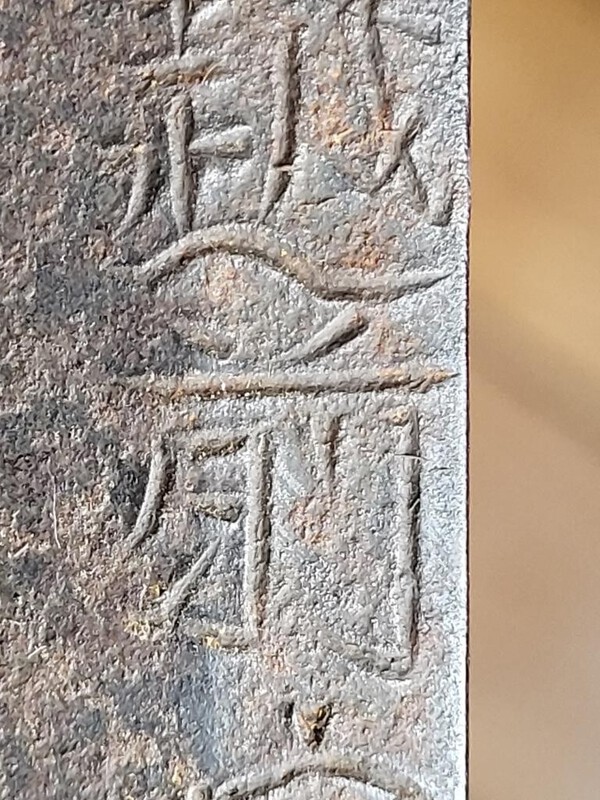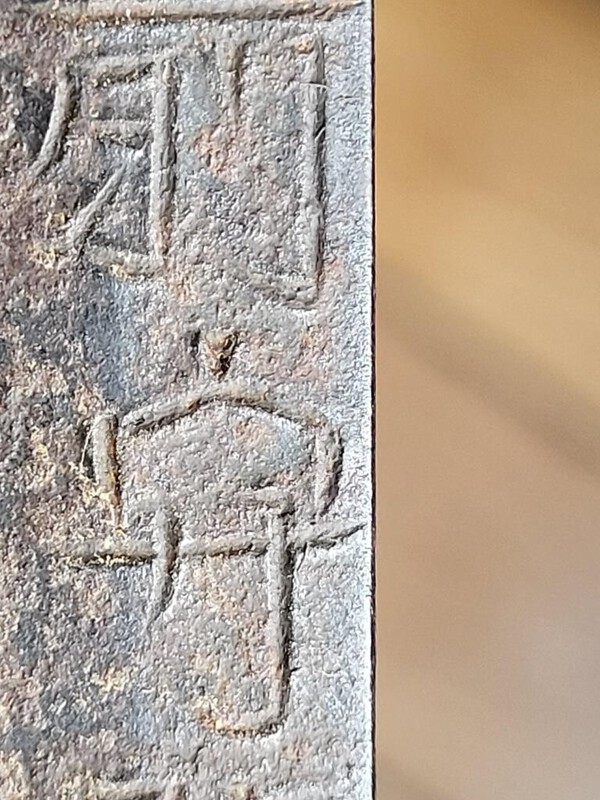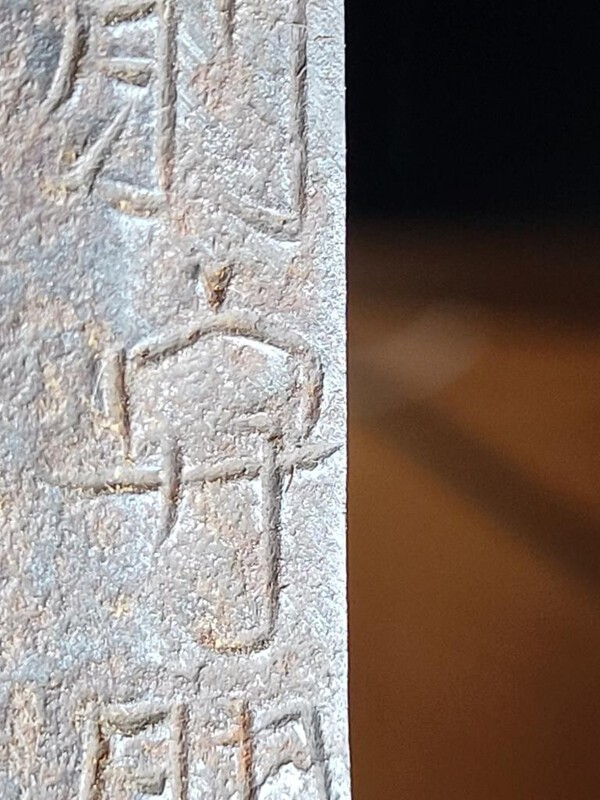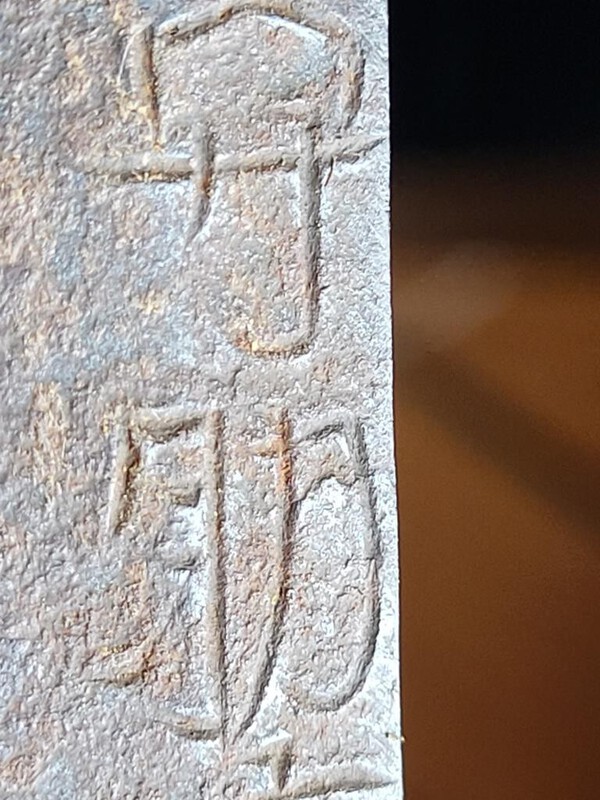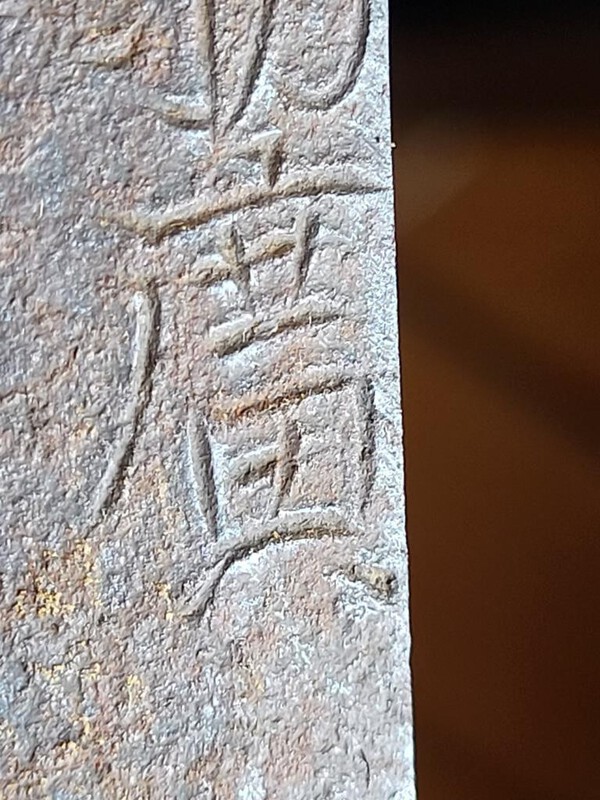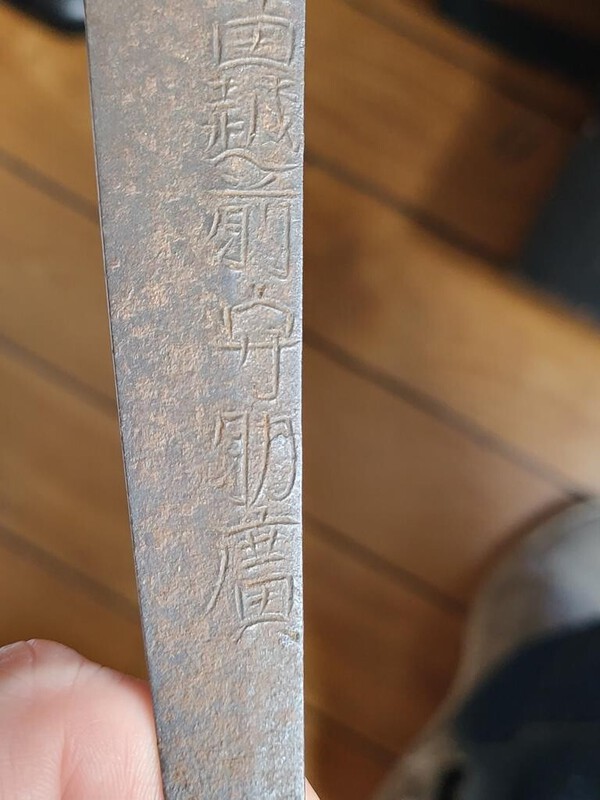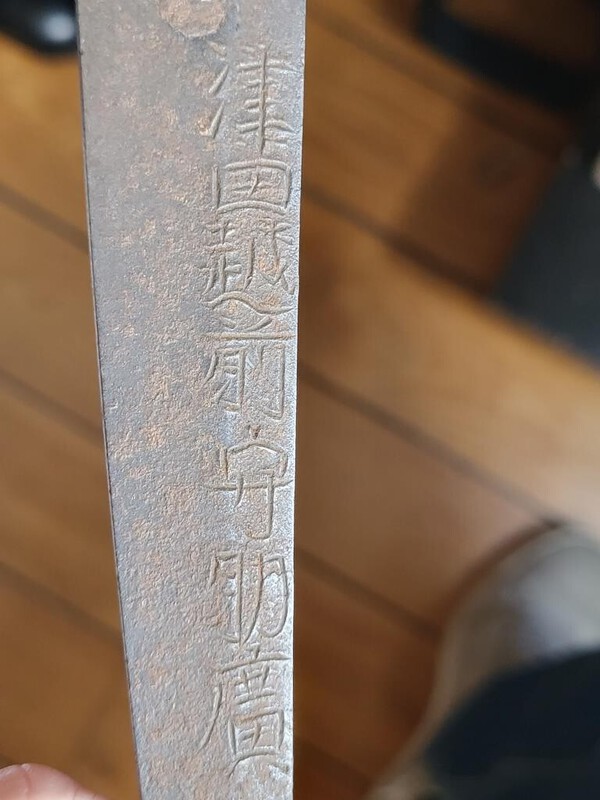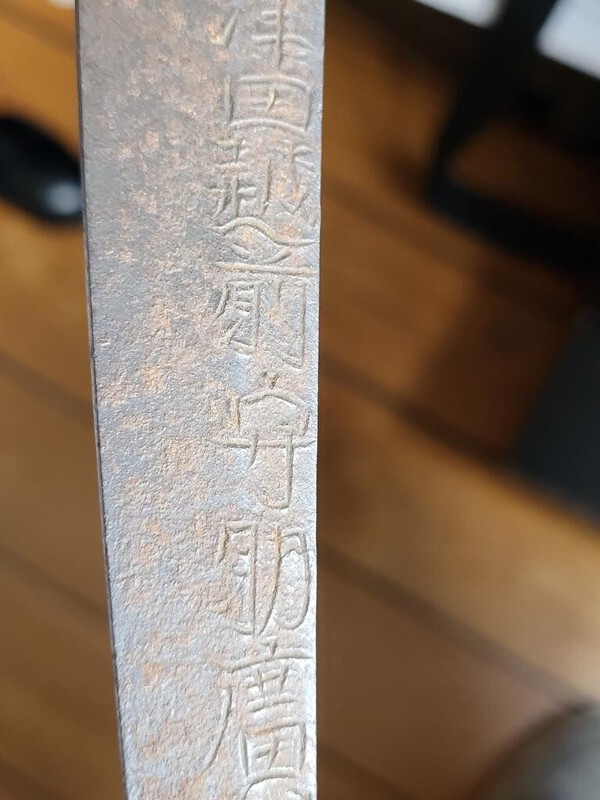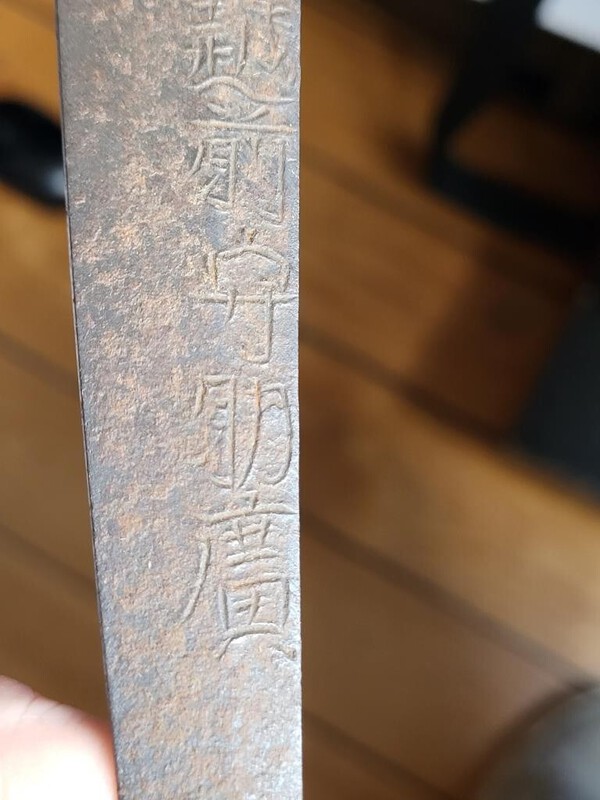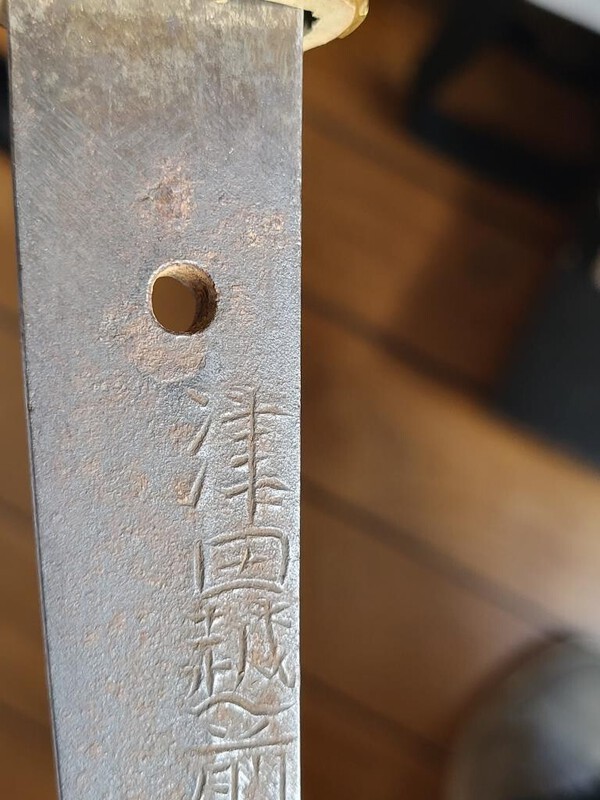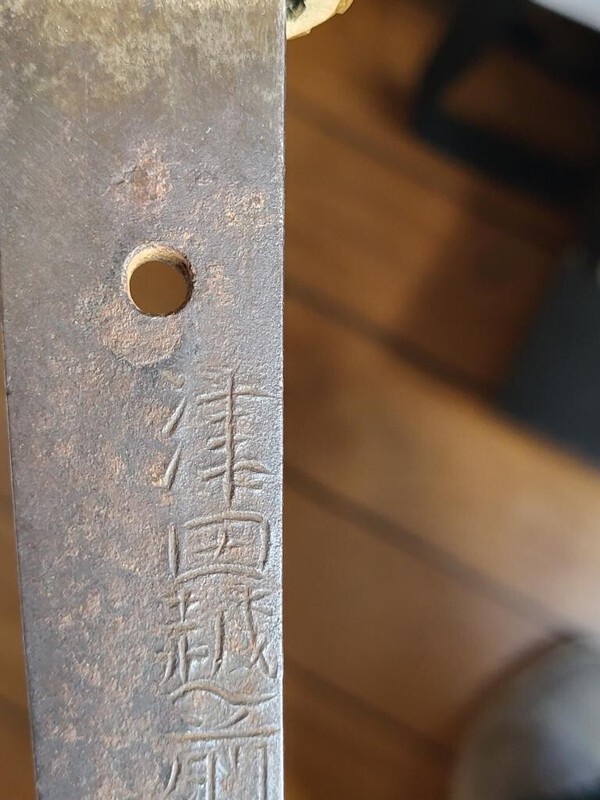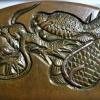All Activity
- Past hour
-
Thanks for the comments, Alex, helping to advance the game. The larger one seems to be closer to a perfect ‘maru-gata’ circle. The Tagane hits around the seppa dai are different too. Possibly an owner kept both as alternatives for a particular tachi…(?)
-
In my opinion, this is one of several types of battle arrow-heads. The cross section can be square, but mostly it is rhombic. The YAJIRI for target practice are round and have no NAKAGO (cap type).
-
Kiipu started following WTS Military Dictionaries
-
United States. War Department. Japanese Military Dictionary. TM 30-541. 29 August 1944. Beige softcover, 4.5 x 6.75 inches, vi/618 pages, no pictures or illustrations. Dictionary has two parts; Japanese-English and English-Japanese. The top 1.75 inches of the front cover have separated from the spine. See picture. No missing pages, no writing or highlighting. No tears other than the front cover. A good working dictionary. United States. Army Service Forces. Office of the Chief of Ordnance. Translation of Japanese Ordnance Markings. August 1945. Blue softcover, staple bound, 5.25 x 7 inches, 78 pages. No writing or highlighting. Reprint from the mid-1990s. Price for both is $70 with shipping included within the United States. Pictures coming shortly.
-
Brian, this post is again in the wrong section! Could you please move it to the military section? Thank you in advanve!
- Today
-
Thanks Brian!
-
I also have a Nagamitsu blade in RS mounts. It is in storage at the moment, but I do have a few photos of it:
-

please identify this type94 military sword
BANGBANGSAN replied to Wangzi's topic in Military Swords of Japan
It's a type 94 with an eggshell finish. While it may not be as desirable as the glossy finished ones to some people, it's still nice and original. -
A beautiful sword. If you brought it to the Chicago show at the end of the month, you'd surely sell it there to someone.
-
Natichu joined the community
-
It’s gendaito than again it depends on the smith and conditions of blade thanks for your help Steve
-
Katakiri carving with a chisel usually results in a sharp cut, meaning that the cross section of the cut will look like a "V". Cast copies won't have that feature, the cross sections will look like a "U". Dirt or other coatings may disguise the sharp cut. This is difficult to tell from a photo sometimes so may need to enlarge or use a magnifying glass. Another tell on these reproductions is the extensive use of silver. Silver was usually used to pick out small details.
-
Reviving an old thread here: I was wondering what type of arrowhead this is? My guess would be target practice, but possibly togari-ya? It doesn't seem to match the standard styles. It's actually square shaped. John C.
-

Edo Period Corner Part II
GeorgeLuucas replied to estcrh's topic in General Nihonto Related Discussion
Wanna switch lives with me, Piers? Envious of all that cool stuff! I've got to visit Japan one of these years Thanks for sharing all this. Very cool! -Sam -
Some additionnal photos that allow to better see the kanji. Giordy, the blade is from an old french collection. So not coming from Japan without papers. I don't contemplate to send to shinsa. I won't hassel with the shipping and export documentations, and as you said, before a shinsa it means polish. John, some sword are obviously gimei, on other we can have a doubt. For me this mei looks closely to the oshigata. They are not 100% same as oshigata, but you also have difference between 2 oshigata. Looking at the oshigata as a whole, I think this one is close. And I confess that both the state of the nagako with rust and the quality of photo don't' help for an opinion.
-
On the mounts, yes. But again, if the blade is a gendaito as opposed to a showato, then the devaluation would be minimal. If, however, these are ONLY mounts, then the condition should be taken into consideration. John C.
-
I found it interesting that the same' is black, as in a kai-gunto. John C.
-
Hi Piers, no expert The most obvious difference is one seems to have delicate thin metal around the kogai ana, the other quite thick. Patina, level of surface pitting seems to differ between them. Both large as you point out Get the impression someone paired them together at some point. Impossible to say when but who knows, perhaps a previous owner in the past knows they were paired together, family history.
-
Hello Jpoe. Is that what you go by? We like to have a real first name, or a nickname you go by, for our conversations. We'll need some better photos of the blade to judge it properly. Full length, bare naked blade; full length of the bare tang (nakago) with the brass habaki (collar) removed; a couple of close-ups of the temper line and blade tip. With the limited photos at hand, it mostly looks like a WWII era blade in Japanese officer gunto fittings. It should have a wooden scabbard (saya) with leather cover, but the cover is often missing. You can see photos of complete ones here: 九八式軍刀略式外装 Informality mounting (ohmura-study.net)
-
Interesting John If paint was stripped will that decrease value ?
-
" One of the World's Oldest Samurai Swords Was Found in an Attic "
stackinnutts replied to Franco D's topic in Nihonto
Brian no problem I can go ahead and update and YES my real name is Jimmy; and YES I did live in Antartica when I established my profile on here and seeing as i'm only there a few months a year I can go ahead and update it......so although you don't believe me I was being truthful on my proflie. Cheers! -
Thanks for all that replied
-
There aren't any. It's just personal choice when ordering one. No associated styles or schools.
-
@stackinnutts We require a real first name and a general location. You are neither Jimmy, nor in Antarctica. Please edit your profile. The details required are vague enough to retain anonymity and shouldn't be a problem. Thanks.














